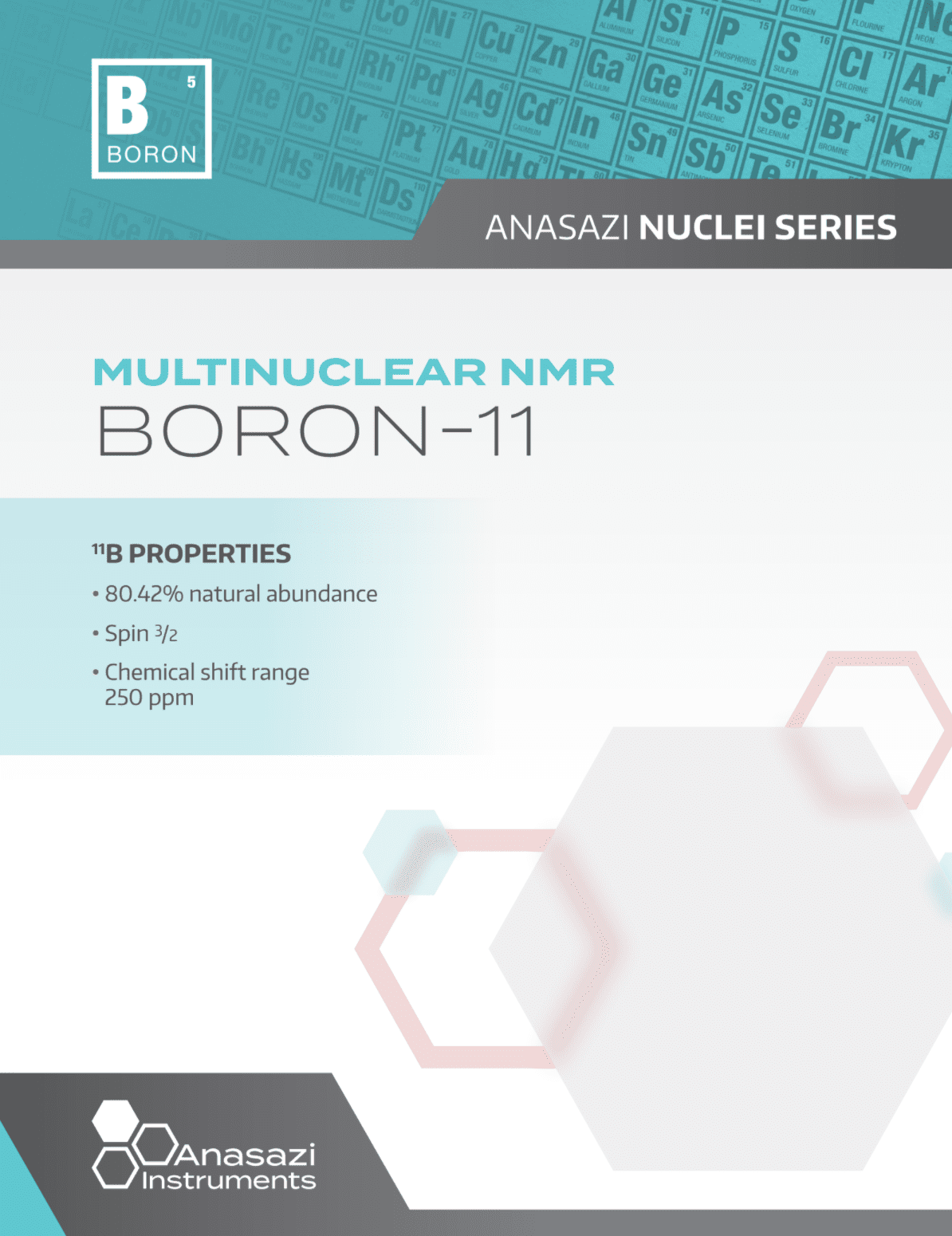Using Boron NMR Spectroscopy To Analyze Compounds
31P
29Si
11B
59Co
15N
What can you do with 11B NMR?
Use 11B chemical shifts to determine coordination number. For example, the reaction of a 3-coordinate to 4-coordinate boron will result in a large upfield shift.
Did You Know?
Scientists were forced to rethink and develop a new paradigm of chemical bonding to explain and understand the structures of relatively simple boranes. This led to the Royal Swedish Academy awarding William H. Lipscomb the Nobel Prize in Chemistry in 1976 for his contributions.
The structural diversity of boron containing compounds is second only to carbon compounds— polyhedral boranes, boron macrocycles, metalloboranes, carboranes and boron dendrimers to name a few.
Along with structural diversity comes diversity of function—antibiotics, boron neutron capture therapy, boron clusters used in analogs of bioactive molecules, Suzuki coupling reagents, etc.
Recommended Literature
D. Reed in Encyclopedia of Nuclear Magnetic Resonance, John Wiley & Sons, Inc., Chichester, 1996; Vol. 1, 321-333.
11B Properties
- 80.42% natural abandance
- Spin 3/2
- Chemical shift range of 250 ppm
- Receptivity 754
- Gyromagnetic ratio 8.584 MHzT-1
- Reference standard H3PO4
- Freq EFT-90: 28.868 MHz

Nuclei Series Download
To download a copy of Boron-11 for your use and reference click on the download PDF link below.
